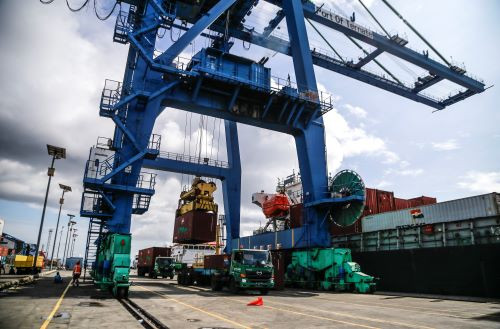Popular Reads
Top Results
Can't find what you're looking for?
View all search resultsPopular Reads
Top Results
Can't find what you're looking for?
View all search resultsNumber of counterfeit notes has skyrocketed since last year
The number of counterfeit banknotes confiscated during the first 10 months of this year more than doubled from that of last year, with public awareness of the existence of fake money remaining low, according to Bank Indonesia
Change text size
Gift Premium Articles
to Anyone

T
he number of counterfeit banknotes confiscated during the first 10 months of this year more than doubled from that of last year, with public awareness of the existence of fake money remaining low, according to Bank Indonesia.
Data from the central bank show that the number of fake banknotes reported and confiscated as of this October jumped 123.79 percent to 273,223 from 122,091 in the full year 2014. Meanwhile, the ratio of counterfeit notes is 18 in every million, double last year's nine in every million.
BI executive director and currency management department head Suhaedi attributed general public inability to identify fake money as the main factor in the jump.
'The trend has no direct relation with the upcoming general or regional elections; it hinges more on people's awareness and willingness to report cases [of counterfeit money] to the police,' he said in Central Jakarta on Monday.
A widely circulated rumor has it that the number of fake banknotes leaps at election times because they are distributed in order to coax people into voting for certain candidates.
However, BI's data show that the number of fake notes found was more or less stagnant last year, when legislative and presidential elections were held, and for most of this year, at below 20,000 per month. The number skyrocketed this March to almost 140,000 pieces following the arrest of four perpetrators in Jember, East Java.
Suhaedi did not reveal the sum of state losses occasioned by counterfeiting.
Suhaedi said that his office would keep working with the National Police and the Attorney General's Office to eradicate the circulation of counterfeit money and grow public confidence in the rupiah.
President Joko 'Jokowi' Widodo's government recently enacted an obligation to use rupiah in all onshore transactions; the measure was taken to curb local demand for dollars and hence stabilize the rupiah, which has long been among Asia's most volatile currencies.
The rupiah has slowly regained its value after losing around 20 percent by October, when it reached 14,693 against the greenback, making it the region's second-worst performer after the Malaysian ringgit. It stood at Rp 13,723 against the US dollar on Tuesday, or 0.20 percent down from the 13,696 it booked the previous day, according to the Jakarta Interbank Spot Dollar Rate (JISDOR).
To support the President's efforts, the central bank issued BI Regulation No. 17, which stipulates times when non-rupiah currencies can be used in international financial and commercial transactions, specifies income and expenditure under the state budget and regulates foreign currency savings and deposits in banks and international financing transactions, as well as many other transactions covered by the BI Law and the Investment Law.
However, the regulation stipulates exemptions for certain strategic infrastructure projects, such as airports and projects in electricity and geothermal energy, with the consent of the central bank. BI has also given some companies extra time to adjust their accounting systems to rupiah, as allowed by Article 16 of Bank Indonesia Regulation No. 17, which stipulates that the bank can adopt a particular policy if the mandatory use of rupiah for non-cash transactions causes problems for business people, with certain qualifications.









